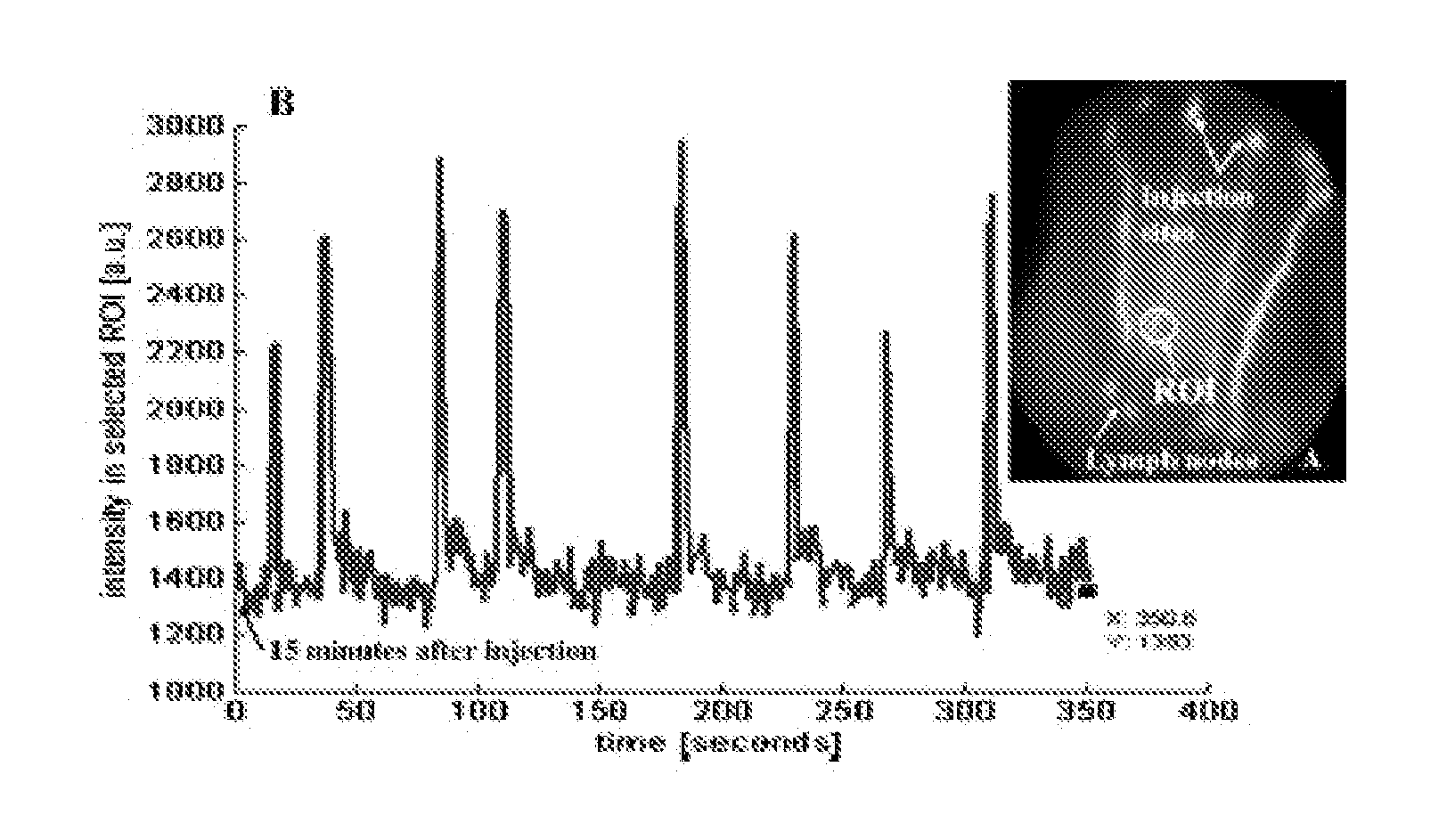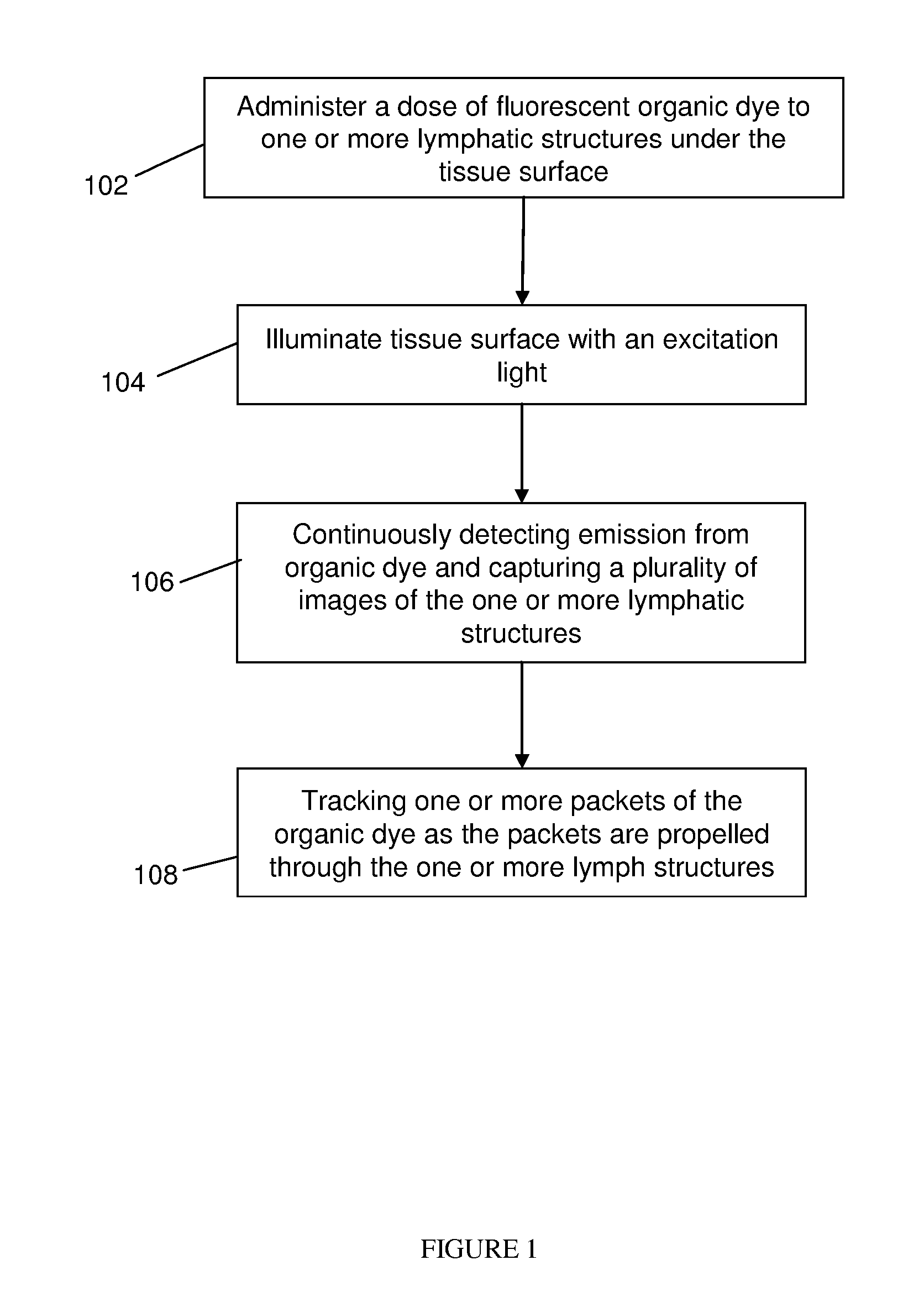Imaging agents for functional imaging of lymphatic structures
a lymphatic system and functional imaging technology, applied in the field of biomedical imaging, can solve the problems of difficult detection of lymph nodes and therefore resecting of lymph nodes, deleterious effects of resection of lymph nodes for staging purposes, and difficulty in finding lymph nodes by surgeons
- Summary
- Abstract
- Description
- Claims
- Application Information
AI Technical Summary
Benefits of technology
Problems solved by technology
Method used
Image
Examples
example 1
Material and Methods
Animal Models
[0066] Four, two-month old, 60 lb white Yorkshire swine (K Bar Livestock, HC 69 Box 270 Sabinal, Tex.) were imaged using protocols which were approved by the Baylor College of Medicine Institutional Animal Care and Use Committee. The animals were anesthetized, intubated, and maintained with isoflurane. Animal body temperature was maintained at 100° F. using a warming blanket. At the end of the procedure, the animals were euthanized and lymph nodes resected with fluorescence guidance. Swine were chosen for the lymph mapping study because swine dermis and lymphatic plexus of swine is considered most comparable to humans.
NIR Fluorescence Enhanced Imaging
[0067] Continuous-wave optical imaging of the fluorescent NIR dyes was performed with a custom built intensified charged-coupled device (CCD). Reynolds J S, Troy T L, and Sevick-Muraca E M. Multipixel techniques for frequency-domain photon migration imaging. Biotechnol Prog 13: 669-680, 1997., inc...
example 2
Modification of IR-783 Dye
[0076] IR-783 was combined with 4 mercaptobenzoic acid in presence of ethyldiisopropylamine (DIPEA). The mixture was stirred for eight hours under nitrogen atmosphere and dimethyl formic acid solvent was removed. The compound 1 (IR-783-S-Ph-COOH) was purified by flash chromatography.
[0077] Compound 1 was treated with hydroxysuccinamide (HOSu) in dimethylformamide (DMF) and purified to obtain compound 2 (IR-783-S-Ph-COOSu). Compound 2 was combined with mono-Trityl 1,6-diaminohexan acetic acid salt in DMF and DIPEA. The mixture was stirred overnight to remove solvent and the residue (compound 3) was dissolved in methanol and purified by flash chromatography. Finally, compound 3 was mixed with 40% TFA (trifluoro acetic acid) in DCM (dichloromethane). The mixture was stirred for 30 minutes to remove the solvent. The residue was washed with ether several times and purified by HPLC (high pressure liquid chromatography.
Conjugation of Modified IR-783 to HA
[00...
PUM
| Property | Measurement | Unit |
|---|---|---|
| excitation wavelength | aaaaa | aaaaa |
| molecular weight | aaaaa | aaaaa |
| excitation wavelength | aaaaa | aaaaa |
Abstract
Description
Claims
Application Information
 Login to View More
Login to View More - R&D
- Intellectual Property
- Life Sciences
- Materials
- Tech Scout
- Unparalleled Data Quality
- Higher Quality Content
- 60% Fewer Hallucinations
Browse by: Latest US Patents, China's latest patents, Technical Efficacy Thesaurus, Application Domain, Technology Topic, Popular Technical Reports.
© 2025 PatSnap. All rights reserved.Legal|Privacy policy|Modern Slavery Act Transparency Statement|Sitemap|About US| Contact US: help@patsnap.com



